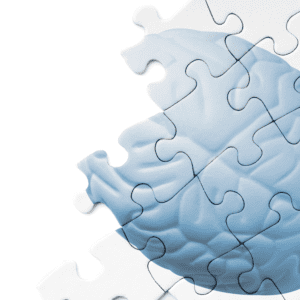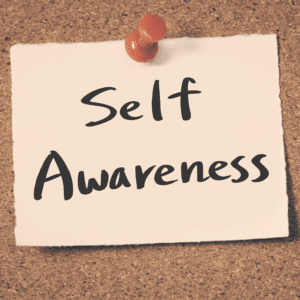개요
결정을 내리는 것은 어렵습니다. 누군가에게 다가가서 "저녁 먹을래?" 또는 "오늘 밤 어떤 영화를 볼까?"라고 말할 수는 없는 것이죠. 하지만 사업 결정과 일상 생활에 관해서는 과학에서 더 나은 선택을 하는 데 도움이 되는 몇 가지 기술이 있다는 것을 보여주었습니다. 이 글에서는 그러한 기술 중 일부를 살펴보고 여러분이 의사 결정 능력을 향상시키는 방법을 배울 수 있도록 하겠습니다!메모하고 요약하세요.
메모를 하고 주요 요점을 요약하는 것은 의사결정 능력을 향상시키는 가장 효과적인 방법 중 하나입니다.- 읽으면서 메모를 하세요. 메모는 읽기 쉬운 것이 중요하므로 메모에 일관된 형식을 사용해 보세요. 요점이나 숫자(1., 2., 3.)를 사용할 수 있지만 모든 것이 깔끔하고 질서 있게 보이도록 하면 공부할 때 중요한 것에 집중하는 데 도움이 됩니다!
- 노트에 핵심 요점을 요약하세요. 다시 한 번 말하지만, 이렇게 하면 무언가를 읽고 거기서 배운 것을 적는 사이에 번역 과정에서 아무것도 손실되지 않도록 하는 데 도움이 됩니다. 누가 알겠어요? 의사 결정 기술 향상과 관련된 자료를 읽는 동안 좋은 노트를 쓴 후 충분한 시간이 남았다면 이런 "추가 학점" 활동도 가능해질 수 있을 거예요!
목록과 개념을 만드세요.
- 기억하고 싶은 핵심 요점을 나열해 보세요.
- 각 항목에 대한 개념을 만든 다음, 각 제목 아래에 이러한 개념을 노트나 마인드맵에 적으세요.
- 개념 지도나 마인드맵을 사용하여 아이디어를 정리하고 아이디어가 서로 어떻게 관련되어 있는지 확인하세요(아래 "마인드 매핑" 참조).
핵심 요점을 기억하기 위해 기억술을 활용하세요.
기억술 장치는 핵심 요점을 기억하는 좋은 방법입니다. 여기에는 약어, 운율 및 기타 기억 요령이 포함됩니다. 다음 방법을 사용하여 기억하는 데 도움을 받으세요.- 다이어그램이나 차트와 같은 시각적 보조 자료를 활용하면 나중에 공부할 때 정보를 더 쉽게 기억할 수 있습니다.
- 무엇인가를 기억하려고 할 때 상상력을 발휘하여 배우고자 하는 것과 직접적으로 관련되는 이미지를 만들어 보세요(예를 들어, 소의 소화계 내부에서 무슨 일이 일어나는지 기억하는 데 도움이 필요하다면, 소가 풀을 먹는 모습을 상상해 보세요).
노트에 있는 아이디어들 사이에 관계를 만듭니다.
- 노트에 있는 아이디어들 사이에 관계를 만듭니다.
- 이를 수행하는 가장 좋은 방법은 주요 요점의 마인드 맵을 만드는 것입니다. 이를 통해 요점을 더 쉽게 기억하고 요점 간의 연결을 더 쉽게 볼 수 있습니다. 예를 들어, 한 가지 아이디어가 실험 데이터를 기반으로 특정 결정이 내려진 방법에 대한 것이고 다른 아이디어가 다른 사람이 직감만으로 비슷한 결정을 내린 방법에 대한 것이라면, 이 두 가지 아이디어를 서로 연결하면 나중에 공부하거나 결정을 내리려고 할 때(또는 이 과제를 수행하는 동안) 두 가지 아이디어가 이전에 연결되어 있었기 때문에 어느 시점에서 다시 함께 떠오르는 데 도움이 됩니다!
색인 카드를 사용하여 정보를 그룹으로 구성한 다음, 그룹을 옮겨 가장 적절한 순서로 정리합니다.
- 시스템을 사용해 메모를 정리하세요.
- 카드 그룹을 정리할 수 있는 시스템이 있는지 확인하세요.
- 카드 그룹을 이리저리 이동할 수 있는 시스템이 있는지 확인하세요.
내용을 충분히 알았다고 생각되면 공부를 멈추고 휴식을 취하세요.
내용을 충분히 잘 배웠다고 생각되면 휴식을 취하십시오. 휴식을 취하지 않고 마음을 쉬게 하지 않고 공부할수록 피곤해지고 실수를 하기 시작할 가능성이 커집니다. 이런 일이 발생하면 휴식을 취하십시오! 공부 세션 중에 자주 휴식을 취하면 전혀 휴식을 취하지 않는 경우보다 더 많은 정보를 기억할 수 있습니다. 가능하다면 공부를 30분 이상 하지 말고 잠시 공부를 쉬십시오(예: 점심 식사). 그런 다음 다시 공부를 시작하여 30분이 지날 때까지 기다렸다가 대략 같은 길이의 휴식을 다시 취하십시오(역시: 점심 식사).- 이런 휴식은 얼마나 오래 지속해야 할까요? 각자에게 가장 적합한 것이 무엇인지에 따라 다르지만 일반적으로 10~15분이면 대부분 사람의 필요에 충분할 것입니다. 책상/책/노트/기타에서 벗어나 정신적으로 재충전한 후 나중에 필요할 때 다시 공부로 돌아갈 수 있기 때문입니다.*









